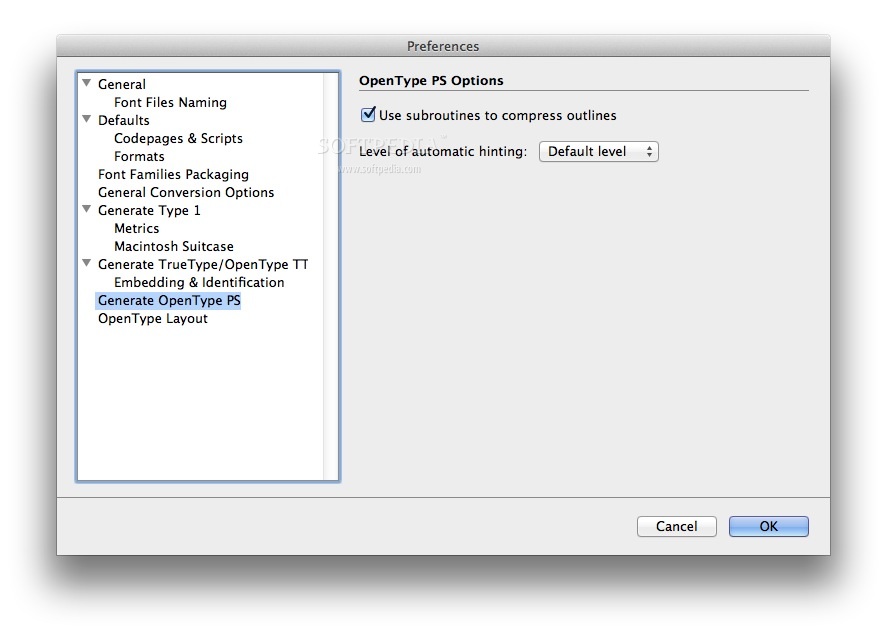
Application menu, which gives access to various settings and actions.The TransType 4 user interface (UI) consists of the following elements: After the conversion is done, depending on TransType’s preferences, the app will either remove all the fonts from the project or keep them, allowing you to re-run the conversion.In TransType 4, one and the same profile applies to all fonts in a project per conversion. TransType then performs the conversion of each font into the desired location, using the conversion profile. the target font format), and select the Destination location. Once you are happy with your modifications, you can select a conversion profile (i.e.TransType always presents the intended (target) configuration of the fonts: it shows you how the fonts will look and behave after the conversion.You can also use filters to apply some visual effects to the fonts which are being converted.
#Transtype d manual#
#Transtype d mac#

In theory, you could do the same exact thing using Derived Columns. I output lines of equal signs to show where the change in delimiter occurs. The output from this is designed to show the result of first using the pipe delimiter to do a split on the entire text line, followed by doing a split on the very first column from the first split, but using the # as the delimiter for that. WScript.Echo CStr(I + 1) & " : " & Arr1(J) WScript.Echo CStr(I + 1) & " : " & Arr2(I) Set fso = WScript.CreateObject("Scripting.FileSystemObject")įilename = "C:\Users\c50522\Documents\TEST_DATA.TXT"

I took your data (removing the color directive and the codes), and pasted it into a TEST_DATA.TXT file.

Rather than reading in one long line and then parsing out the fields yourself, why not change the Flat File connection to make the delimiter be a '#' ? (I think it defaults to comma) Then your fields will come into your data flow already broken out.
#Transtype d code#
Is there another way to load the data using SSIS?īelow is my code which did not work as I cannot define the DT_STR length.:unsure:Īccount = (DT_STR,?,1252)SUBSTRING(ID,FINDSTRING(ID,"#",1)+ 1,FINDSTRING(ID,"#",2)- 1) To extract the ID eleminits I'm using the Derived column from data flow transformation. I'm moving data from a text file to a table using SSIS.īelow is an example of my data and how it needs to be broken down.


 0 kommentar(er)
0 kommentar(er)
